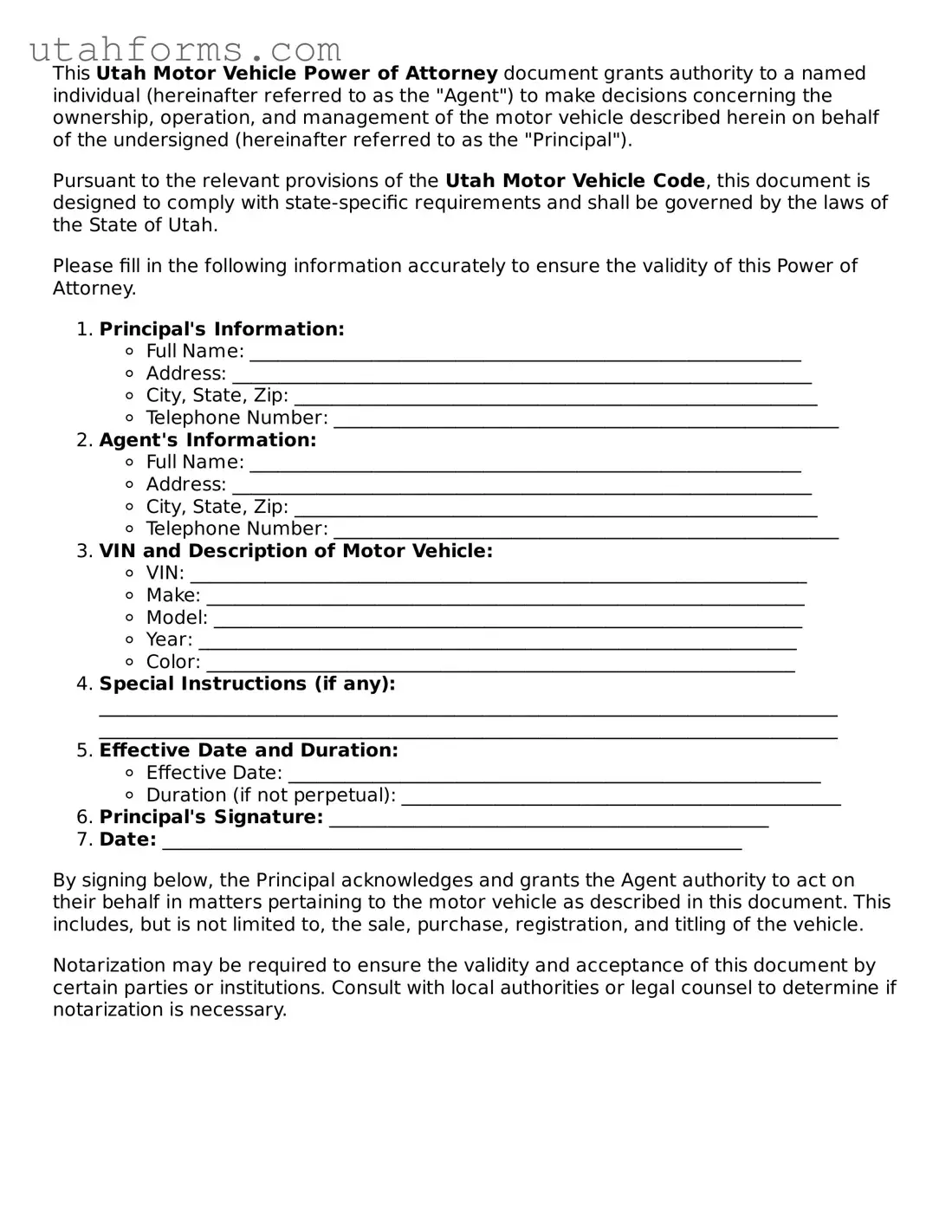This Utah Motor Vehicle Power of Attorney document grants authority to a named individual (hereinafter referred to as the "Agent") to make decisions concerning the ownership, operation, and management of the motor vehicle described herein on behalf of the undersigned (hereinafter referred to as the "Principal").
Pursuant to the relevant provisions of the Utah Motor Vehicle Code, this document is designed to comply with state-specific requirements and shall be governed by the laws of the State of Utah.
Please fill in the following information accurately to ensure the validity of this Power of Attorney.
- Principal's Information:
- Full Name: ___________________________________________________________
- Address: ______________________________________________________________
- City, State, Zip: ________________________________________________________
- Telephone Number: ______________________________________________________
- Agent's Information:
- Full Name: ___________________________________________________________
- Address: ______________________________________________________________
- City, State, Zip: ________________________________________________________
- Telephone Number: ______________________________________________________
- VIN and Description of Motor Vehicle:
- VIN: __________________________________________________________________
- Make: ________________________________________________________________
- Model: _______________________________________________________________
- Year: ________________________________________________________________
- Color: _______________________________________________________________
- Special Instructions (if any):
_______________________________________________________________________________
_______________________________________________________________________________
- Effective Date and Duration:
- Effective Date: _________________________________________________________
- Duration (if not perpetual): _______________________________________________
- Principal's Signature: _______________________________________________
- Date: ______________________________________________________________
By signing below, the Principal acknowledges and grants the Agent authority to act on their behalf in matters pertaining to the motor vehicle as described in this document. This includes, but is not limited to, the sale, purchase, registration, and titling of the vehicle.
Notarization may be required to ensure the validity and acceptance of this document by certain parties or institutions. Consult with local authorities or legal counsel to determine if notarization is necessary.
